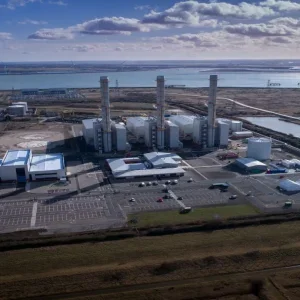The accident occurred in the penstock of the Cabin Creek pumped storage project,, located 45 miles west of Denver. The painting contractors, from RPI Coating, Inc., were recoating a 1530ft steel portion of the 4300ft penstock when a flash fire suddenly erupted as the vapor from flammable solvent, used to clean the epoxy spraying wands, ignited, probably from a static spark in the vicinity of the spraying machine, said the report. The initial fire quickly grew, igniting additional buckets of the solvent, methyl ethyl ketone (MEK), and other combustible epoxy materials stored nearby.
The CSB concluded the causes of the accident included (1) a lack of planning and training for hazardous work by Xcel and its contractor, RPI Coating, Inc., (2) Xcel’s selection of RPI despite its having the lowest possible safety rating (zero) among competing contractors, and (3) allowing volatile flammable liquids to be introduced into a permit-required confined space without necessary special precautions.
The CSB report found that the permit-required confined space rule set by the US Occupational Health and Safety Administration (OSHA) does not prohibit entry or work in confined spaces where the concentration of flammable vapor exceeds 10% of the chemical’s lower explosive limit, or LEL.
OSHA’s rule does state that an atmosphere exceeding 10% of the LEL creates an atmosphere “immediately dangerous to life and health” and that steps should be taken to define safe entry conditions; however, the rule does not define what those safe entry conditions should be or specifically prohibit entry into such hazardous atmospheres, the report notes. The CSB recommended OSHA establish a fixed maximum percentage of the LEL for entry so that work in potentially flammable atmospheres would be prohibited.
Additionally, the Board made recommendations to the company, the governor of Colorado, the Colorado Public Utilities Commission, trade groups, and other organizations.
There were ten workers in the tunnel and one at the entrance at the time of the fire. Five were unable to get around the fire on the painting platform to get to the only available exit – the improvised tunnel entrance. Five workers on the other side of the platform made it to safety, although three of those workers sustained injuries.
The CSB said that Xcel and RPI failed to have technically-qualified confined space rescue crews immediately standing by at the penstock in case of emergency, as required by regulations. Workers called 911 for help but responders entering the penstock had to retreat in the thick smoke, as did workers who had approached the fire with extinguishers.
The closest confined space technical rescue unit – equipped and trained to enter the smoke-filled tunnel – was approximately one hour and 15 minutes away. The trapped workers died about one hour before this response unit arrived, their escape blocked by a steep vertical section of the tunnel deep inside the mountain, says the report.
The CSB investigation determined that while companies are required to perform a hazard analysis prior to issuing permits for work in confined spaces, regulatory standards pertaining to the use of flammables within confined spaces are inadequate.
The CSB recommended that OSHA amend its confined space rule to establish a maximum percentage substantially below the lower explosive limit for any given flammable for safe entry and occupancy while working.
The CSB made recommendations to nine other entities. These included that the governor implement an accredited firefighter certification program for technical rescue with specialty areas including confined space rescue; that the Colorado Public Utilities Commission (PUC) require regulated utilities to adopt provisions for selecting contractors based on safety performance measures and qualifications; and that the PUC require utilities to investigate all incidents resulting in death, serious injury or significant property damage and submit and make public written findings and recommendations within one year of the accident.
Numerous recommendations were made to RPI Coating, particularly aimed at revising its confined space entry program and guidance.
In a statement, Xcel Energy said it has become increasingly careful about which contractors it hires and has improved oversight of contractors. The company has also increased safety training for its project managers and for contractors who work for Xcel.
Related Articles
Cabin Creek fatalities named, investigation continues






